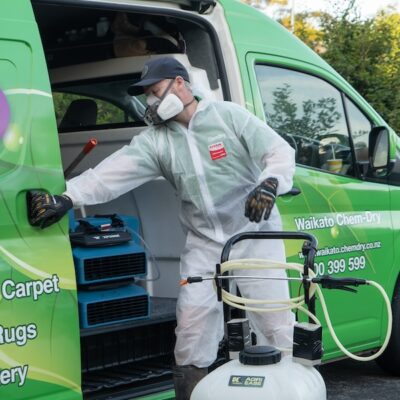Drones: four ways insurance might benefit
With their increased accessibility and affordability, drones could change the way in which insurance assesses risk, processes claims, optimises manpower and reduces fraud.
953
By John Burgin.
Drones have changed the way we see the world. And with their increased accessibility and affordability, they are capable of changing the way in which insurance assesses risk, processes claims, optimises manpower and reduces fraud.
Although drones, or unmanned aircraft, have been used for military purposes since the beginning of aerospace, the technology has captured the imagination of wider audiences only recently, due to greater affordability and ease of use.
When paired with a GoPro or similar wide-angle camera, the hand-operated GPS-guided planes today serve a variety of purposes from offering eyes and ears to help FIFA monitor World Cup soccer security, to giving consumers a bird’s eye view of their physical environment, to keeping servicemen out of harm’s way in hostile places.
But what about commercial applications? Last year, the US Federal Aviation Authority (FAA) received more than 80 applications from entities seeking drone use. And drone deployments are expected to triple over the next five years to 125,000, according to the Association of Unmanned Vehicle Systems.
As for current uses, search and rescue increasingly rely on drones, given their ability to scan a two mile radius from 1,500 feet in significantly less time than on foot. Farmers use them to increase yield and reduce crop damage. BP taps them to pinpoint and analyse pipeline repairs. News media and entertainment employ them to get closer to the action or further away to capture new perspectives. Amazon, UPS and Domino’s Pizza have announced plans to start piloting drone delivery next year.
Insurers poised for take-off
Not to be left out, commercial and personal-line insurers will likely be among the list of early adopters. For example, a property adjuster could gain more useful insights in less time by remotely guiding a drone to a location of interest. Or a handler might resolve a catastrophe claim faster and more effectively with a drone’s help.
While pending regulations, privacy concerns and robotic limitations could slow immediate adoption, once these obstacles are overcome, drones could have a significant commercial impact on the world, insurance included. To that end, here are four realistic scenarios for employing drones in the insurance industry:
1. Improved claims efficiency and safety. Drones have the potential to significantly change property adjusting. Instead of climbing scaffoldings and ladders to assess rooflines, ice dams and chimneys or renting scissor lifts and boom trucks to determine the cause and extent of fire damage, claims adjusters can deploy a drone to analyse hazardous situations without sacrificing sure footing or disturbing the scene. When armed with a drone, adjusters are able to capture better evidence, including close-ups, wide angles and zooming capabilities.
When it comes to detecting water and air leaks, drones with infrared cameras turn an otherwise time-consuming job into a much faster one. According to our estimates, drones can save claims adjusters approximately 40–50 percent on average, while boosting productivity and due diligence. Further, drones make it possible for field adjusters to consult remote specialists in real-time with live visuals and audio for further guidance and more accurate decision-making, a task that becomes even more difficult at properties with two or more storeys. All told, drones enable adjusters to carry less, stay safe and greatly improve evidence collection.
2. Enhanced productivity of risk engineers. With the availability of drones, a generalist, rather than a specialist, can be sent to the field to assess risk. The generalist can easily navigate the drone through the property to capture videos and photos while using recorded voice dictations to note what they see. All this creates more accurate and timely reports, without wasting a risk engineer’s time traveling from one location to another.
That said, drones are also capable of reducing incorrect risk pricing or increased claim costs, since they speed up often delayed reports that originate from underwriting or claims teams. While some carriers have provided tablets to field engineers to streamline data collection, the time needed to complete a risk assessment has not improved, since field personnel must still climb ladders and scaffoldings to inspect properties. In that sense, drones not only reduce the demands of specialised workers, they also save time for all involved, eliminate the need for multiple site visits and significantly reduce the cost and turnaround time for completing risk-assessment reports.
3. Heightened customer service. As drones increase the speed and efficacy of risk engineers and adjusters, they also compress the time it takes for claims to get paid, which improves customer satisfaction. This is especially true of catastrophe claims, 40 percent of which involve hurricanes and tropical storms. In most scenarios, catastrophe adjusters encounter damaged or blocked roads, fallen trees, broken power lines and other safety hazards while evaluating losses.
With the help of catastrophe models and CAT vans, carriers have been able to examine affected areas within hours of a disaster. But they are still hampered when it comes to assessing and handling large numbers of claims within a short period of time. For instance, when a tornado hit Joplin, Missouri, it took roughly three days for adjusters to locate the perimeter of loss due to access issues. Then it took an average of two weeks to resolve claims. When used properly, drones have the potential to cut claim payout times in half, without sacrificing due diligence.
4. Reduced agricultural fraud. Drones can also be used effectively in crop insurance—not only to determine the actual cultivable land, but also during the claims process to understand the extent of loss and the actual yield. Although few carriers offer it, crop insurance is the single largest source of financial protection for farmers. During droughts, farmers often lose money while waiting several days for an adjuster to inspect the land. With such high stakes, there is a higher chance of fraud: an estimated $100 million annually in fraudulent claims.
Enter drones. When equipped with high-precision cameras, they can help adjusters to understand the true health of a field in a colour contrast. Or given their ability to cover distances quickly, drones can reduce the time it takes to settle claims from days to hours. Based on weather trends, drones can also be proactively positioned in areas of high-claim activities and deployed the moment a new order comes in. Additionally, since drones can relay information back to remote specialists in real time, more claims can be resolved within a shorter time frame, making for a faster and streamlined insurance process.
As technology evolves, it becomes increasingly vital for insurers to adopt more innovative approaches to how they conduct business or risk losing opportunities to more future-focused competitors—something most carriers can ill afford during periods of sluggish growth. For many, drones promise to be the next disruptive technology, with the potential to reduce cost, fraud and turnaround dramatically, while boosting productivity.
As the regulatory environment catches up with technology, insurance carriers must not overlook the market opportunities that drones facilitate across all lines of business. Clearly, now is the time for carriers to begin strategising and prototyping for this technological evolution.
John Burgin is vice president and head of digital, Asia Pacific Region, for Cognizant.




